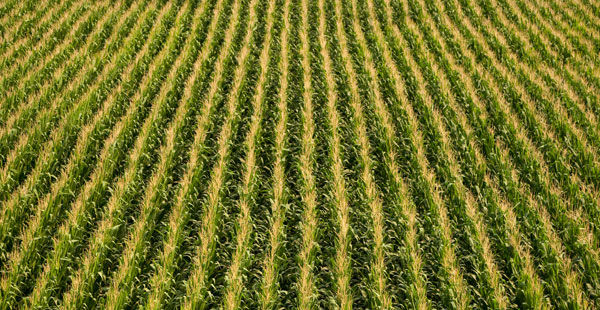Three Ways Fungicides Protect Crop Potential and Increase ROI
April 16, 2018

Each year, growers thoughtfully select corn hybrids and soybean varieties for their operation. As they make their decisions, they try to find the perfect match that will stand up to any challenges that may come their way. While their hybrid or variety number may change each year, the goal stays the same: Higher yields and a better return on investment (ROI).
However, without crop protection products like herbicides and fungicides, even the best corn hybrids and soybean varieties can suffer. While growers often start planning a herbicide program during the winter, some take a wait-and-see-approach when it comes to fungicides. Unfortunately, by delaying a fungicide decision, growers could leave profit potential on the table.
“Growers are always better off with a planned fungicide application,” explained Randy Myers, fungicides product development manager at Bayer. “By being proactive with a fungicide application, growers can address any areas that their corn hybrids or soybean varieties may fall short. Growers may not see the results until the end of the season, but stronger, disease-free plants stand up to stresses that can come at any point in the growing season.”
Every season comes with a new set of challenges, and growers work hard all season long to protect their crops. Fungicides can play an important role in protecting crop potential and providing growers a return on their investment in three ways:
- Disease prevention: For growers in areas that often experience high disease pressure, or previously had an issue with some of the worst yield robbing diseases like gray leaf spot or northern corn leaf blight, disease prevention is perhaps one of the most important benefits a fungicide can provide.
“It’s important to look for a fungicide that has a broad spectrum of disease control,” says Thorsten Schwindt, fungicides product manager at Bayer. - Curative benefits: In many cases, growers may not catch diseases until it’s too late. Growers should choose fungicides that not only prevent disease, but also fight diseases that may already be present. For example, Delaro™ provides curative benefits in addition to an unmatched broad spectrum of disease control.
- Improved plant health: Disease-free corn and soybeans are clearly healthier than those that have been infected, but growers should look for a fungicide that also helps improve plant health. For example, Delaro promotes dark green leaves which improves photosynthesis for healthier plants. “Even if growers don’t see much disease in a season, improved plant health from a fungicide can help provide a yield lift giving growers a greater return on their investment in seed and inputs,” said Schwindt.
Myers and Schwindt recommend growers look at what diseases their corn hybrids and soybean varieties are more susceptible to and choose a fungicide accordingly. In addition, fungicides should have two modes of action that work together to maximize control.
“Many fungicides on the market are combination products,” said Myers. “Most have a strobilurin backbone, but typically the other active ingredient either only works for a short period after application or isn’t very broad spectrum in its control. Delaro is different because combined with the strobilurin chemistry is a unique triazole, specifically prothioconazole, that provides curative benefits, broad-spectrum disease control and long-lasting residual activity that works through the entire spray interval.”